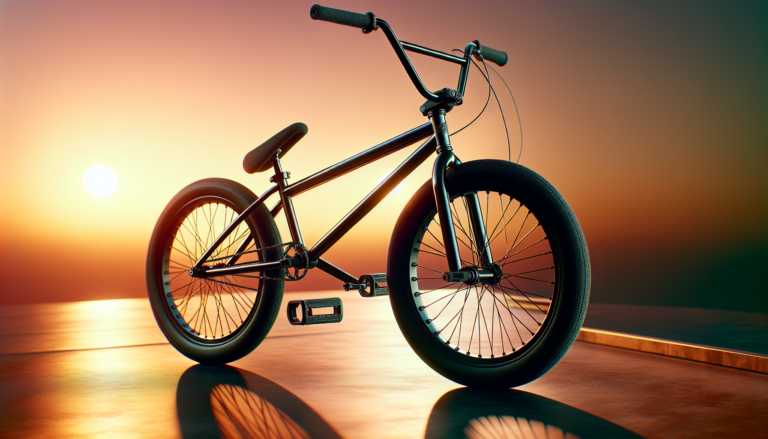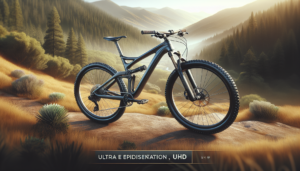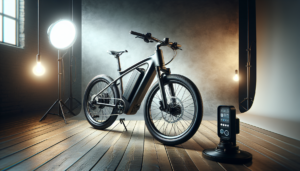Introduction to BMX Bikes
BMX (Bicycle Moto Cross) is a popular category of bikes designed for extreme sports and youth recreation. BMX bikes are characterized by their smaller geometry, robust construction, and lack of gears, making them simpler to use and maintain compared to other bike types. The BMX bike’s unique design allows riders to perform various stunts, race on dirt tracks, or simply enjoy casual riding.
What is a BMX Bike?
A BMX bike is a small-framed bicycle built for durability and agility. The key features that define a BMX bike include:
- 20-inch wheels
- No suspension
- Lightweight frame
- Strong rear brake
- Knobby tires for traction
These features collectively make the BMX bike easy to control and maneuver, especially for younger riders. The bike’s design prioritizes strength and precision, with specialized frame geometries that enhance agility and resilience.
History and Evolution of BMX Bikes
BMX bikes originated in the late 1960s in California, inspired by motocross racing. Children and teenagers began racing their bicycles on dirt tracks, emulating the motocross stars of the era. As the popularity of BMX racing grew, manufacturers started producing purpose-built BMX bikes that could withstand the rigors of off-road riding and racing.
Over time, BMX bikes evolved to accommodate various riding styles and disciplines. Freestyle BMX emerged, focusing on performing tricks and stunts in skateparks and urban environments. Dirt jumping also developed as a distinct style, with riders launching their bikes off ramps and performing aerial maneuvers.
Types of BMX Bikes
Standard BMX Bikes
Standard BMX bikes, also known as race bikes, are designed for speed and agility on dirt tracks. These bikes feature a lightweight frame, knobby tires for traction, and a strong rear brake for controlled stopping power. The geometry of a standard BMX bike is optimized for cornering and rapid acceleration, making them ideal for competitive racing.
Freestyle BMX Bikes
Freestyle BMX bikes are built for performing tricks and stunts. These bikes have a sturdy, reinforced frame and components that can withstand the impact of jumps and grinds. Freestyle bikes often include axle pegs, which are small cylindrical extensions on the wheel axles that enable riders to perform grinds and stalls on obstacles like handrails and ledges.
Dirt Jumper BMX Bikes
Dirt jumper BMX bikes, or jump bikes, are specifically designed for riding on dirt ramps and performing aerial tricks. These bikes have a compact frame geometry that allows for greater stability and control in the air. Dirt jumpers typically have suspension forks to absorb the impact of landings and provide a smoother ride on rough terrain.
Key Features of BMX Bikes
Frame and Geometry
The frame is the foundation of a BMX bike, and its geometry plays a crucial role in the bike’s performance. BMX frames are typically made from high-tensile steel or aluminum alloys, offering a balance of strength and lightweight construction. The compact geometry, with a shorter wheelbase and lower stand-over height, enhances maneuverability and allows riders to perform tricks more easily.
Tires and Brakes
BMX bikes are equipped with knobby tires that provide excellent traction on various surfaces, including dirt, concrete, and asphalt. The tires are generally wider than those found on other bikes, offering greater stability and cushioning.
Most BMX bikes feature a single strong rear brake, usually operated by a hand lever on the handlebars. The powerful brake allows for quick stops and controlled skids, which are essential for performing tricks and navigating technical terrain.
Components and Accessories
BMX bikes use specific components designed for durability and performance. These include:
- Heavy-duty wheels with reinforced spokes
- Sealed bearings in the hubs and bottom bracket
- Wide, flat pedals for grip and support
- Thick, padded saddle for comfort during tricks
- Axle pegs for grinding (freestyle bikes)
Many BMX components are designed to be user-friendly, allowing riders to easily customize and maintain their bikes.
Uses and Applications of BMX Bikes
BMX Racing
BMX racing is a competitive discipline where riders race on dirt tracks with jumps, berms, and other obstacles. Races typically involve a series of heats, with riders competing against each other to cross the finish line first. BMX racing is an Olympic sport, with athletes from around the world participating in international competitions.
Freestyle and Tricks
Freestyle BMX involves performing tricks and stunts on ramps, street obstacles, and in skateparks. Riders use their bikes to execute a wide range of maneuvers, such as bunny hops, grinds, tailwhips, and barspins. Freestyle BMX has several sub-disciplines, including street, park, and flatland, each with its own unique style and set of tricks.
Off-Road and Dirt Jumping
BMX bikes are well-suited for off-road riding and dirt jumping. Riders use dirt jumper BMX bikes to navigate rough trails, launch off jumps, and perform aerial tricks. Dirt jumping often takes place in dedicated bike parks with purpose-built jumps and obstacles, providing a challenging and exciting riding experience.
The BMX Community
Online and Offline Communities
The BMX community is a vibrant and passionate group of riders who share a love for the sport. Online platforms like social media, forums, and websites play a significant role in connecting riders from around the world. Riders share photos, videos, and experiences, fostering a sense of camaraderie and support within the community.
Offline, BMX enthusiasts gather at local skateparks, trails, and events to ride together and showcase their skills. BMX competitions, festivals, and jams bring riders together to celebrate the sport and push the boundaries of what’s possible on a BMX bike.
Learning and Sharing Knowledge
The BMX community is known for its willingness to share knowledge and help others improve their riding skills. Many experienced riders offer guidance and support to newcomers, both in person and through online resources. BMX camps, clinics, and lessons provide structured learning opportunities for riders of all levels.
Online tutorials, how-to videos, and forums are valuable resources for learning new tricks, maintaining bikes, and staying up-to-date with the latest trends in the BMX world. The community’s collective knowledge and experience help riders progress and enjoy the sport to its fullest.
Buying a BMX Bike
What to Look for in a BMX Bike
When purchasing a BMX bike, consider the following factors:
- Riding style: Choose a bike that suits your intended use (racing, freestyle, dirt jumping)
- Frame material: High-tensile steel is durable and affordable, while aluminum offers a lighter weight
- Components: Look for high-quality parts that can withstand the demands of BMX riding
- Size: Ensure the bike fits your height and riding style
- Brand reputation: Research reputable BMX brands known for their quality and customer support
It’s also essential to consider your skill level and budget when selecting a BMX bike. Beginners may opt for an entry-level complete bike, while more experienced riders may choose to build a custom bike with specific components.
Price Ranges and Options
BMX bikes are available at various price points, catering to different budgets and riding preferences. Entry-level complete bikes can be found for around $300, offering a great starting point for new riders. These bikes typically feature high-tensile steel frames and basic components suitable for learning the fundamentals of BMX riding.
As riders progress and develop their skills, they may invest in higher-end BMX bikes with more advanced features. Mid-range bikes, priced between $500 and $1,000, often include lighter aluminum frames, better components, and more customization options. Some high-end BMX bikes can cost as much as $2,000 or more, featuring top-of-the-line parts, premium materials, and expert craftsmanship.
Ultimately, the best BMX bike for you depends on your individual needs, riding style, and budget. It’s essential to do your research, read reviews, and consult with experienced riders or reputable bike shops to make an informed decision.
Conclusion
BMX bikes are versatile, durable, and fun bicycles that have captured the hearts of riders worldwide. Whether you’re interested in racing, freestyle, or dirt jumping, a BMX bike offers a unique and exciting riding experience. With their compact geometry, robust construction, and specialized components, BMX bikes are designed to withstand the rigors of extreme riding and enable riders to push their limits.
As you explore the world of BMX, remember to prioritize safety, wear appropriate protective gear, and respect your fellow riders. The BMX community is a welcoming and supportive group, so don’t hesitate to reach out for advice, inspiration, or riding companionship.
Whether you’re a seasoned pro or just starting out, a BMX bike can open up a world of possibilities. So grab your helmet, head to the nearest skatepark or dirt track, and experience the thrill of riding a BMX bike for yourself!
#ED#






